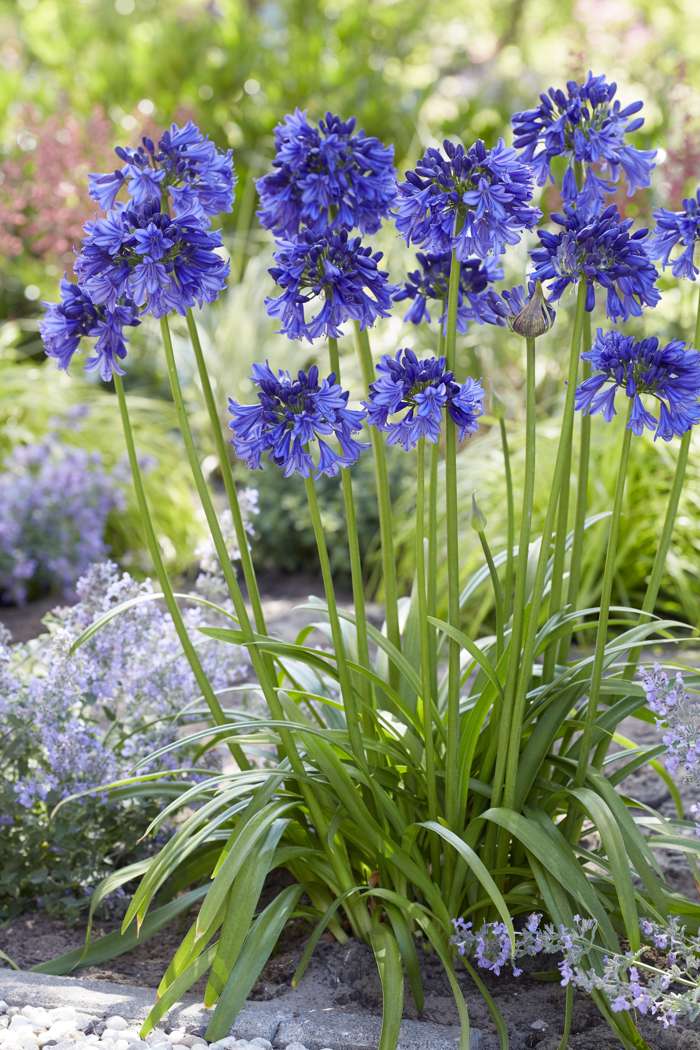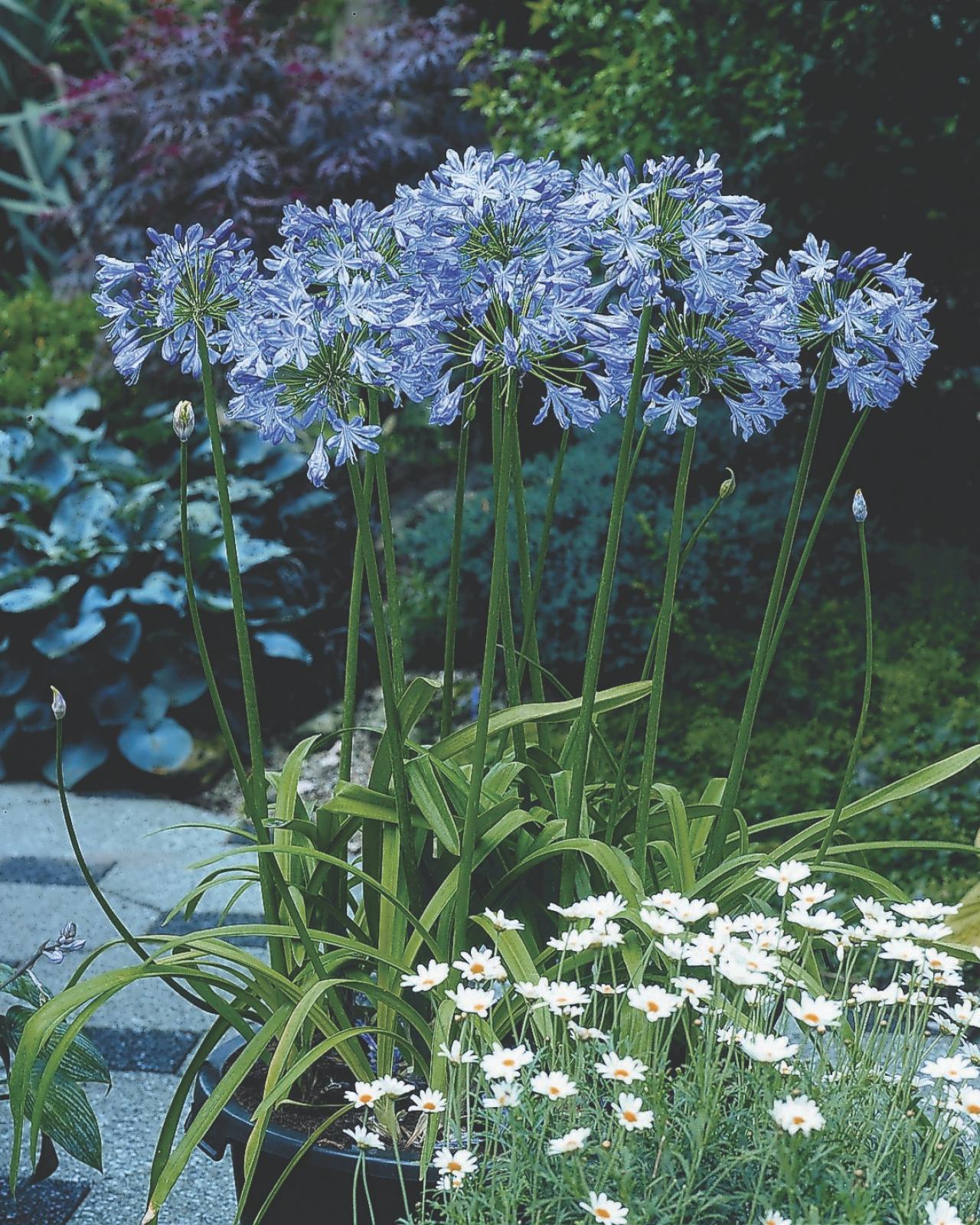Agapanthus Friend Plants: Perfect Pairings for Your Garden
Agapanthus Friend Plants: Perfect Pairings for Your Garden
Blog Article
Releasing the Secret to Successful Agapanthus Growing: Tips and Tricks for a Flourishing Garden
In the realm of gardening, cultivating agapanthus successfully needs a critical approach that includes numerous facets of plant care. By comprehending the subtleties of agapanthus cultivation, one can produce a setting where these plants grow and bloom generously.
Growing Agapanthus: Ideal Practices
When planting Agapanthus, appropriate soil prep work is essential for guaranteeing effective development and growth of these beautiful flowers. Agapanthus, frequently called Lily of the Nile or African lily, grows in well-draining soil with a slightly acidic to neutral pH level - Agapanthus. Before planting, it is vital to modify hefty clay dirts with organic matter such as compost or peat moss to boost drainage and offer vital nutrients for the plants
To plant Agapanthus, pick a place that obtains complete sunshine to partial shade, as this will certainly advertise healthy development and bountiful blooming. Dig an opening twice the size of the plant's root sphere and position the Agapanthus at the exact same depth it was formerly growing. Gently backfill the opening with dirt, pushing down firmly to get rid of any type of air pockets around the roots.
Water the recently grown Agapanthus extensively and remain to maintain the soil uniformly moist, especially during the plant's active expanding season. Agapanthus. Using a well balanced fertilizer once a month can further sustain the plant's development and flowering. By following these finest methods for growing Agapanthus, you can produce a sensational screen of these captivating flowers in your yard
Suitable Soil Conditions for Agapanthus
For ideal development and flowering success of Agapanthus plants, ensuring the dirt conditions are excellent is crucial. Agapanthus favors soil that is abundant in nutrients, so integrating a well balanced fertilizer throughout the growing period can promote healthy and balanced growth and vibrant blossoms.

Watering and Feeding Tips
To ensure healthy growth and lively blossoms, proper watering and feeding strategies are vital for effective Agapanthus farming. Agapanthus plants take advantage of normal watering, specifically throughout the expanding period. It is advised to water deeply as soon as a week, guaranteeing the soil is moist yet not saturated. Throughout heat or in pots, more frequent watering may be required to avoid the dirt from drying totally.
When it comes to feeding Agapanthus, a well balanced fertilizer with equal parts nitrogen, phosphorus, and potassium can be applied in the springtime to advertise healthy development and blooming. Slow-release fertilizers are perfect for providing nutrients gradually over an extensive period. Stay clear of over-fertilizing, as this can cause excessive vegetation development at the expense of blooms.
In addition, including raw material like garden compost into the dirt can improve nutrient levels and boost dirt framework, helping in the overall wellness of the Agapanthus plants. Learn More By following these watering and fertilizing tips, garden enthusiasts can ensure their Agapanthus plants prosper and produce stunning display screens of flowers.
Trimming and Deadheading Techniques
Proper pruning and deadheading techniques play a vital role in keeping the health and appearances of Agapanthus plants, enhancing the important practices of watering and fertilizing for successful cultivation. Pruning Agapanthus includes eliminating invested flower heads, yellowing or dead fallen leaves, and overall shaping of the plant to advertise far better growth. Deadheading, the process of removing faded blossoms, not only improves the plant's appearance however also urges further flowering.
When deadheading Agapanthus, it is advisable to clip off the flower stem at the base utilizing sharp, tidy shears. This procedure redirects the plant's energy from seed production back into root and foliage growth, advertising a much healthier and more robust plant. Routine deadheading can expand the growing duration of Agapanthus and protect against self-seeding, which can lead to overcrowding.
In terms of trimming, Agapanthus usually gain from a light trim after flowering to clean up the plant and urge fresh development. Cutting down the spent flower stems and eliminating any dead or damaged foliage helps maintain the plant's vigor and general appearance. Nevertheless, it is vital to stay go right here clear of reducing right into the crown of the plant, as this can weaken its wellness.

Protecting Agapanthus From Pests and Diseases
Implementing effective parasite and condition monitoring methods is vital to safeguarding the health and vigor of Agapanthus plants in farming. Agapanthus are normally durable plants, however they can still succumb different insects and diseases otherwise properly taken care of. One typical pest that influences Agapanthus is the Agapanthus borer, a caterpillar that tunnels right into the plant, triggering damages to the flowers and leaves. To avoid infestations, regular inspection of the plants is important. If borers are spotted, they can be manually gotten rid of, or insecticidal soap can be made use of as a control step.
In addition to pests, Agapanthus are at risk to illness such as root rot and fungal fallen leave spots. These problems can typically be stopped by guaranteeing correct drainage and staying clear of overwatering. Impacted components of the plant should be immediately eliminated to protect against further spread if indicators of disease show up. Fungicides might likewise be made use of as a therapy measure, following the maker's instructions meticulously. By staying cautious and attending to parasite and disease issues immediately, gardeners can assist their Agapanthus prosper and thrive.

Final Thought
To conclude, successful cultivation of agapanthus needs correct growing strategies, perfect soil conditions, sufficient watering and fertilizing, normal trimming and deadheading, and defense from pests and diseases. By complying with these methods and ideas, gardeners can ensure a flourishing yard filled up with beautiful agapanthus blooms. Agapanthus. Remember to maintain consistent care and interest to detail to promote the health and long life of these spectacular plants
When growing Agapanthus, correct dirt prep work is necessary for making certain effective growth and development of these lovely blossoms.Water the recently planted Agapanthus thoroughly and continue to maintain the dirt evenly wet, especially during the plant's energetic growing season.For optimum growth and growing success of Agapanthus plants, making certain the dirt conditions are excellent is essential. When growing or transplanting Agapanthus, make certain the soil is well-prepared to offer the necessary structure for the why not try this out plants to develop themselves successfully. One usual parasite that influences Agapanthus is the Agapanthus borer, a caterpillar that passages into the plant, causing damages to the flowers and fallen leaves.
Report this page